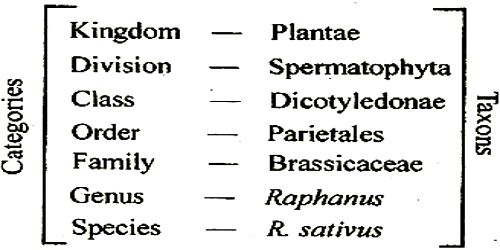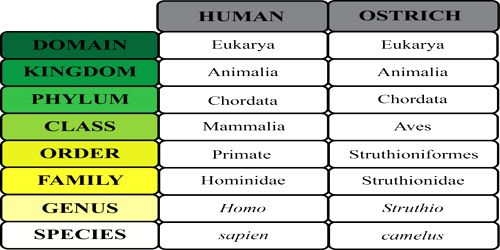Taxonomic Classification
A hierarchical system is used for classifying organisms to the species rank. This system is called taxonomic classification. The broadest classifications are by domain and kingdom; the majority specific classification is by genus and species. The hierarchical groupings in between include phylum, class, family, and order.
There are definite steps for classification of plant kingdom. These steps are called Taxa and are singular Taxon. In biological classification, taxonomic rank is the relative level of a group of organisms (a taxon) in a taxonomic hierarchy. Examples of taxonomic ranks are species, genus, family, order, class, phylum, kingdom, domain, etc.

- Domain: The plant kingdom is composed of the whole number and types of plants present in the world.
- Division: Plant Kingdom is separated into seven Divisions.
- Class: Each division is separated into several classes.
- Order: Each class is separated into numerous orders.
- Family: Each order is separated into some families.
- Genus: Each family is separated into numerous Genera (PI. of Genus).
- Species: Each genus is separated into some species.
There are about 250000 fruit producing plants. There are many terms for naming genetically controlled variants within a species, but these names generally are not considered to be taxa. In a polymorphic species the terms morph and diversity are frequently applied. Sometime only one member of a Taxon might constitute a higher Taxon. In case of requirement any unit may be spitted to sub-unit for which the term sub should be prefixed alongside the main unit (Taxa), e.g. Sub Order, Sub- Family Sub-Genus, Sub-species etc.














